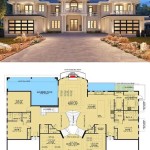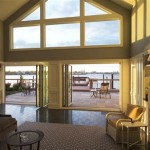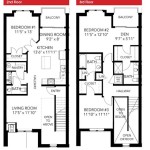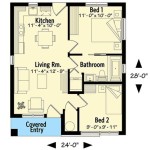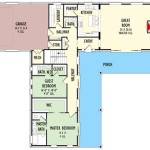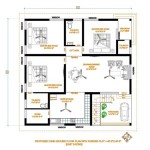Open Floor Plan One-Story House Plans: A Comprehensive Guide
Open floor plan one-story house plans have gained significant popularity in recent years, offering a modern and flexible living space. This architectural design emphasizes a seamless flow between living, dining, and kitchen areas, creating a more spacious and connected environment. The single-story configuration further enhances accessibility and convenience, making it an attractive option for a wide range of homeowners.
The appeal of open floor plans lies in their ability to promote social interaction, improve natural light penetration, and provide a greater sense of spaciousness. This design choice is particularly well-suited for families, individuals who enjoy entertaining, and those seeking a home that adapts easily to changing needs. However, careful planning and consideration are crucial to ensure that the open layout functions effectively and meets the specific requirements of the occupants.
This article aims to provide a comprehensive overview of open floor plan one-story house plans, covering key considerations, benefits, design elements, and potential drawbacks. It will explore various aspects of the design process, including space planning, material selection, lighting, and acoustics, to help prospective homeowners make informed decisions.
Key Considerations in Open Floor Plan Design
Designing an open floor plan effectively requires careful consideration of several key elements. The goal is to create a space that feels open and connected while still providing a sense of definition and functionality to each designated area. Ignoring these considerations can lead to a space that feels chaotic and lacks the intended flow.
Space Planning and Zoning: The first step involves carefully planning the layout and defining distinct zones for different activities, such as cooking, dining, relaxing, and entertaining. This can be achieved through strategically placed furniture, changes in flooring materials, or subtle variations in ceiling height. For example, a kitchen island can serve as a natural divider between the kitchen and living area, while a rug can define the boundaries of a seating arrangement. The placement of furniture should consider traffic flow, ensuring that there are clear pathways throughout the space. It is crucial to avoid overcrowding the area, allowing for ample circulation and a sense of openness. The size and proportion of furniture should be carefully considered to complement the overall scale of the space. A large sectional sofa in a small open area, for example, can overwhelm the space and impede flow. The use of virtual modeling tools can be invaluable in visualizing different space planning options and assessing their impact on the overall feel of the home.
Acoustics and Sound Control: Open floor plans can sometimes suffer from poor acoustics, as sound can travel freely throughout the space. This can be particularly problematic when multiple activities are taking place simultaneously. To mitigate this issue, consider incorporating sound-absorbing materials, such as rugs, upholstered furniture, and acoustic panels. Soft furnishings like curtains and drapes also help. Strategically placing bookshelves or cabinets along walls can also help to diffuse sound waves and reduce reverberation. The selection of flooring materials can also influence acoustics. Hard surfaces, such as tile or hardwood, tend to reflect sound, while softer surfaces, such as carpet or cork, absorb sound. In areas where sound control is particularly important, consider using acoustic ceiling tiles or suspended ceilings. The placement of appliances, such as dishwashers and refrigerators, should also be considered to minimize noise disturbance. High-quality, quiet appliances can significantly reduce noise levels in the open area.
Lighting and Natural Light: Maximizing natural light is a key benefit of open floor plans. Large windows and skylights can flood the space with sunlight, creating a bright and inviting atmosphere. However, it is important to consider the orientation of the house and the potential for glare and heat gain. Window treatments, such as blinds, shades, or curtains, can be used to control the amount of light entering the space. Artificial lighting should be carefully planned to complement natural light and provide adequate illumination for different activities. Layered lighting, which combines ambient, task, and accent lighting, is an effective approach. Ambient lighting provides overall illumination, task lighting focuses on specific areas, and accent lighting highlights architectural features or artwork. Dimmers can be used to adjust the intensity of the lighting to suit different moods and activities. The placement of light fixtures should be carefully considered to avoid glare and shadows. Recessed lighting can provide a clean and modern look, while pendant lights can add a decorative touch. Under-cabinet lighting in the kitchen can provide valuable task lighting for food preparation.
Benefits of One-Story Open Floor Plans
Open floor plan one-story house plans offer numerous advantages that contribute to a more comfortable and functional living environment. These benefits appeal to diverse lifestyles and preferences, making this design a popular choice.
Enhanced Social Interaction: One of the primary benefits of open floor plans is the promotion of social interaction. The seamless flow between living areas allows family members and guests to easily interact and engage in conversation, even while participating in different activities. This is particularly advantageous for families with young children, as parents can supervise children playing in the living area while preparing meals in the kitchen. The open layout also facilitates entertaining, as guests can mingle freely between different areas. The kitchen becomes the heart of the home, serving as a gathering place for conversation and food preparation. This encourages a more inclusive and interactive atmosphere. The lack of physical barriers also promotes a sense of connection and togetherness, strengthening relationships and fostering a more communal living environment.
Improved Natural Light and Ventilation: Open floor plans tend to be brighter and more airy than traditional layouts, as natural light can penetrate deeper into the home. The absence of walls allows light to flow freely throughout the space, reducing the need for artificial lighting during the day. This can lead to significant energy savings and a more pleasant and inviting atmosphere. Large windows and doors can be strategically positioned to maximize natural light and ventilation. Cross-ventilation, which involves strategically placing windows on opposite sides of the house, can help to circulate air and improve indoor air quality. Skylights can also be used to bring in natural light from above, particularly in areas that are not directly exposed to sunlight. Proper ventilation is essential for maintaining a healthy indoor environment, reducing the risk of mold and mildew growth. The use of energy-efficient windows and doors can further enhance the benefits of natural light and ventilation, reducing energy consumption and improving comfort.
Increased Flexibility and Adaptability: Open floor plans offer greater flexibility in terms of furniture arrangement and layout. The absence of fixed walls allows homeowners to easily reconfigure the space to suit their changing needs. This is particularly beneficial for growing families or individuals who enjoy entertaining frequently. The open layout can be easily adapted to accommodate different activities, such as parties, gatherings, or home office setups. The flexibility of the space also allows homeowners to personalize their living environment and express their individual style. The ability to easily move furniture and accessories allows for endless possibilities in terms of interior design. The open layout also makes it easier to accommodate individuals with mobility issues, as there are fewer obstacles to navigate. The absence of doorways and narrow hallways creates a more accessible and user-friendly living environment.
Design Considerations for Specific Needs
While open floor plans offer numerous benefits, it is essential to tailor the design to meet the specific needs and preferences of the occupants. This involves considering factors such as family size, lifestyle, and accessibility requirements.
Families with Young Children: For families with young children, safety should be a top priority. The open layout should be designed to allow for easy supervision of children playing in different areas. The use of child-safe materials and finishes is also essential. Consider incorporating a designated play area or activity zone within the open space. This can help to contain clutter and provide a safe and stimulating environment for children to play. Storage solutions, such as built-in cabinets and shelves, are also important for keeping toys and other items organized. The flooring should be durable and easy to clean, as spills and messes are inevitable. Soft flooring options, such as carpet or cork, can provide a comfortable and safe surface for children to play on. The kitchen should be designed with safety in mind, with features such as childproof locks on cabinets and drawers. The placement of appliances, such as ovens and stovetops, should be carefully considered to minimize the risk of burns. The overall design should be functional and practical, making it easy for parents to manage their daily tasks while keeping an eye on their children.
Individuals Who Enjoy Entertaining: For individuals who enjoy entertaining frequently, the open floor plan should be designed to accommodate large gatherings. The layout should allow for easy flow between different areas, such as the kitchen, dining area, and living room. Consider incorporating a large kitchen island or breakfast bar to provide ample seating and food preparation space. A wet bar or beverage center can also be a valuable addition for entertaining. The lighting should be adjustable to create different moods and atmospheres. Outdoor spaces, such as patios or decks, can be seamlessly integrated with the interior living areas to expand the entertaining space. The flooring should be durable and easy to clean, as spills and messes are likely to occur. Sound control is also important, as large gatherings can generate significant noise levels. Consider incorporating sound-absorbing materials to minimize noise disturbance. The overall design should be stylish and sophisticated, creating a welcoming and enjoyable atmosphere for guests.
Individuals with Mobility Issues: For individuals with mobility issues, accessibility should be a primary consideration. The open floor plan should be designed to be wheelchair-friendly, with wide doorways, level thresholds, and ample turning space. The flooring should be smooth and non-slip to prevent falls. The kitchen should be designed with accessible countertops and appliances. Consider incorporating features such as pull-down shelves and adjustable-height countertops to make it easier to reach items. The bathroom should be designed with accessible features, such as grab bars, a walk-in shower, and a raised toilet seat. The lighting should be bright and even to improve visibility. Smart home technology, such as voice-activated controls, can also be beneficial for individuals with mobility issues. The overall design should be functional and comfortable, allowing individuals to live independently and safely.
Must Have One Story Open Floor Plans Blog Eplans Com

Must Have One Story Open Floor Plans Blog Eplans Com

Must Have One Story Open Floor Plans Blog Eplans Com

3 Bedroom One Story Open Concept Home Plan Architectural Designs 1796 Sq Ft 790029glv House Plans

Unique One Story House Plans Monster

Pin Page

One Story Hill Country Home Plan With Open Floor And Game Room 51851hz Architectural Designs House Plans

Plan 39276st One Level 3 Bed Open Concept House

Ranch Haven House Plan One Story Rustic Home Design M 2830

Unique One Story House Plans Monster

